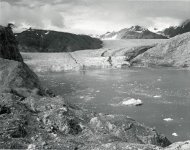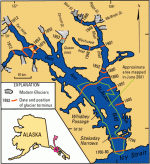IslandTractor
Super Star Member
- Joined
- Sep 15, 2005
- Messages
- 16,647
- Location
- Prudence Island, RI
- Tractor
- 2007 Kioti DK40se HST, Woods BH
Animals are already dissolving in Southern Ocean acid
So be it.
Watch video again, can't explain any simpler then he does. He will answer all of your concerns and in reality he is just as right as you are. In fact he makes more sense then you guys.
George Carlin on Global Warming - YouTube
It is absurd to quote George Carlin in support of denier pseudoscience. Carlin was pissed at and made fun of holier than thou environmentalists who he accused of being concerned only about their backyard and pristine nature walks. He correctly pointed out that Mother Earth would survive and outlast the human species too but he was never a denier. For wingnut foghorns to quote Carlin is surely making him chuckle from his grave.
Try this Carlin video on for size to see what his general political views were: http://climate-connections.org/2012/01/20/george-carlin-on-the-1-ahead-of-his-time-again/
Here are a few of George Carlin's quotes on politics. Unfortunately I don't think he ever got directly involved in the AGW debate because we surely would get a few laughs if he had.
"Have you ever wondered why Republicans are so interested in encouraging people to volunteer in their communities? It’s because volunteers work for no pay. Republicans have been trying to get people to work for no pay for a long time."
"Boy, these conservatives are really something, aren't they? They're all in favor of the unborn. They will do anything for the unborn. But once you're born, you're on your own. Pro-life conservatives are obsessed with the fetus from conception to nine months. After that, they don't want to know about you. They don't want to hear from you. No nothing. No neonatal care, no day care, no head start, no school lunch, no food stamps, no welfare, no nothing. If you're preborn, you're fine; if you're preschool, you're f**ked."
"Once you leave the womb, conservatives don't care about you until you reach military age. Then you’re just what they’re looking for. Conservatives want live babies so they can raise them to be dead soldiers."
"The real reason that we can't have the Ten Commandments in a courthouse: You cannot post 'Thou shalt not steal,' 'Thou shalt not commit adultery,' and 'Thou shalt not lie' in a building full of lawyers, judges, and politicians. It creates a hostile work environment."
"If churches want to play the game of politics, let them pay admission like everyone else."
"I'm completely in favor of the separation of Church and State. My idea is that these two institutions screw us up enough on their own, so both of them together is certain death."
"You know the good part about all those executions in Texas? Fewer Texans."


